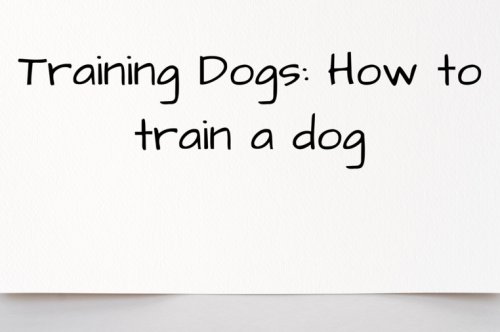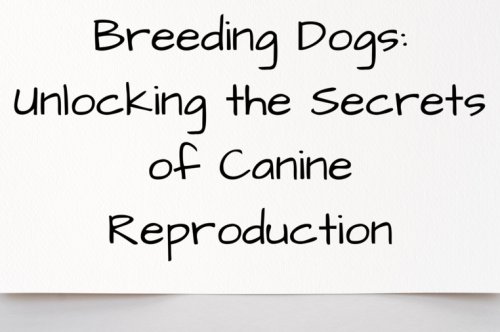Breeding Dogs

Breeding Dogs: Unlocking the Secrets of Canine Reproduction
Introduction
Have you ever wondered what goes on behind the scenes when it comes to breeding dogs? In this comprehensive guide, we will delve into the fascinating world of canine reproduction and explore the intricacies of breeding dogs. Whether you are a seasoned breeder or simply curious about the process, this article will provide you with valuable insights and expert advice.
Chapter 1: The Basics of Canine Reproduction
Section 1: The Heat Cycle
The heat cycle, also known as estrus, is a critical aspect of canine reproduction. During this period, female dogs are receptive to mating and can conceive. We will discuss the different stages of the heat cycle and how to determine when your dog is ready for breeding.
Section 2: The Role of Hormones
Hormones play a vital role in the reproductive process of dogs. We will explore the hormones involved in the heat cycle, such as estrogen and progesterone, and their effects on the female dog's body. Understanding these hormonal changes is crucial for successful breeding.
Section 3: Male Reproductive System
Breeding dogs is not just about the females; the male dogs also play a significant role. In this section, we will take a closer look at the male reproductive system, including the anatomy of the testes and the production of sperm. We will also discuss factors that can affect the quality of sperm.
Chapter 2: Preparing for Breeding
Section 1: Genetic Testing
Before breeding dogs, it is essential to ensure the health and genetic fitness of both the male and female. We will discuss various genetic tests available for dogs, such as DNA testing for hereditary diseases, and how to interpret the results.
Section 2: Selecting the Right Pair
Choosing the right pair of dogs for breeding is crucial for producing healthy and desirable offspring. We will explore the factors to consider when selecting breeding partners, including breed standards, temperament, and genetic compatibility.
Section 3: Nutrition and Health
Proper nutrition and health are vital for the successful breeding of dogs. We will provide guidelines on the ideal diet for breeding dogs, including essential nutrients and supplements. Additionally, we will discuss the importance of regular veterinary check-ups and vaccinations.
Chapter 3: The Breeding Process
Section 1: Natural Breeding
Natural breeding is the traditional method of dog reproduction, where mating occurs naturally between the male and female. We will discuss the signs of mating readiness in dogs and the process of natural breeding, including successful mating techniques.
Section 2: Artificial Insemination
Artificial insemination is a technique used to facilitate breeding when natural mating is not possible or desired. We will explore the different methods of artificial insemination, including vaginal insemination and surgical insemination, and their benefits and drawbacks.
Section 3: Pregnancy and Whelping
Once the breeding is successful, the female dog goes through pregnancy and gives birth to puppies. We will guide you through the stages of pregnancy, including prenatal care, signs of labor, and the whelping process. We will also provide tips for caring for the newborn puppies.
Conclusion
Breeding dogs is a complex and rewarding endeavor that requires knowledge, dedication, and a deep understanding of canine reproduction. By following the guidelines and advice presented in this article, you will be well-equipped to embark on your breeding journey. Remember, each breeding experience is unique, and continuous learning is key to becoming a successful breeder.
Start your journey into the world of breeding dogs today and unlock the secrets of canine reproduction!



